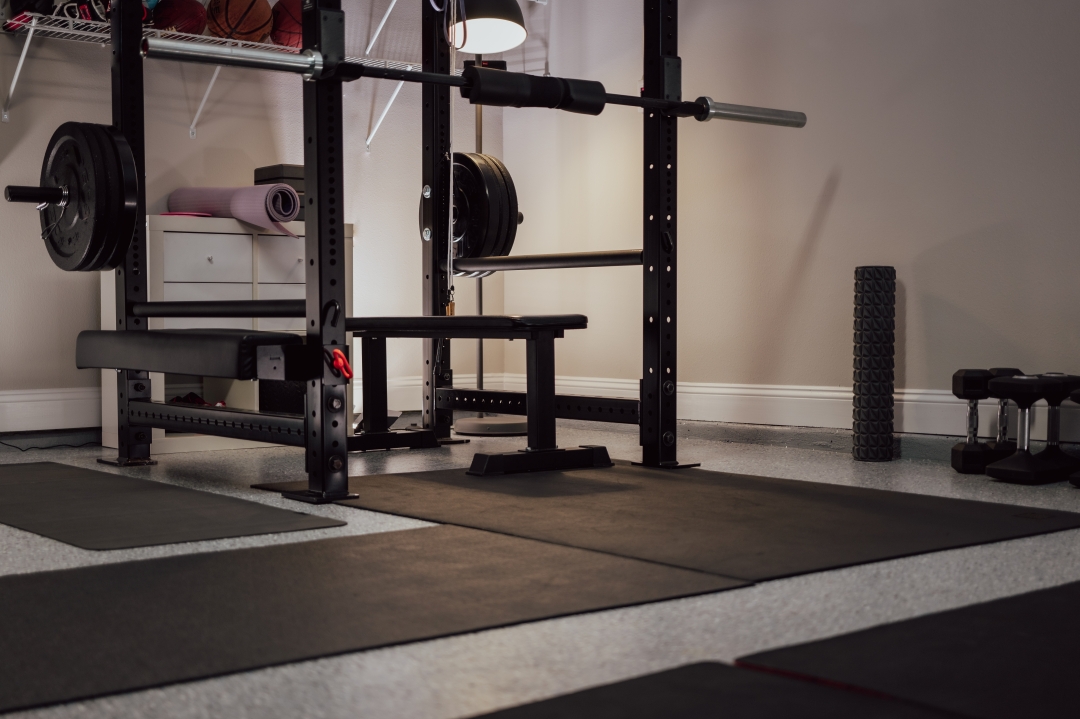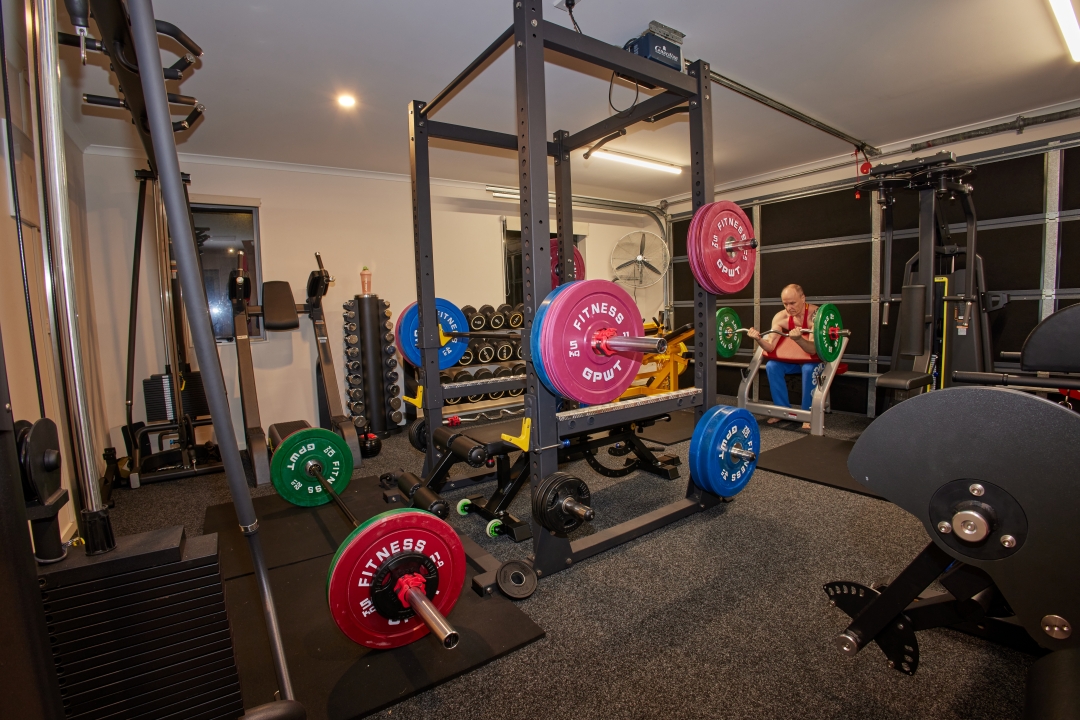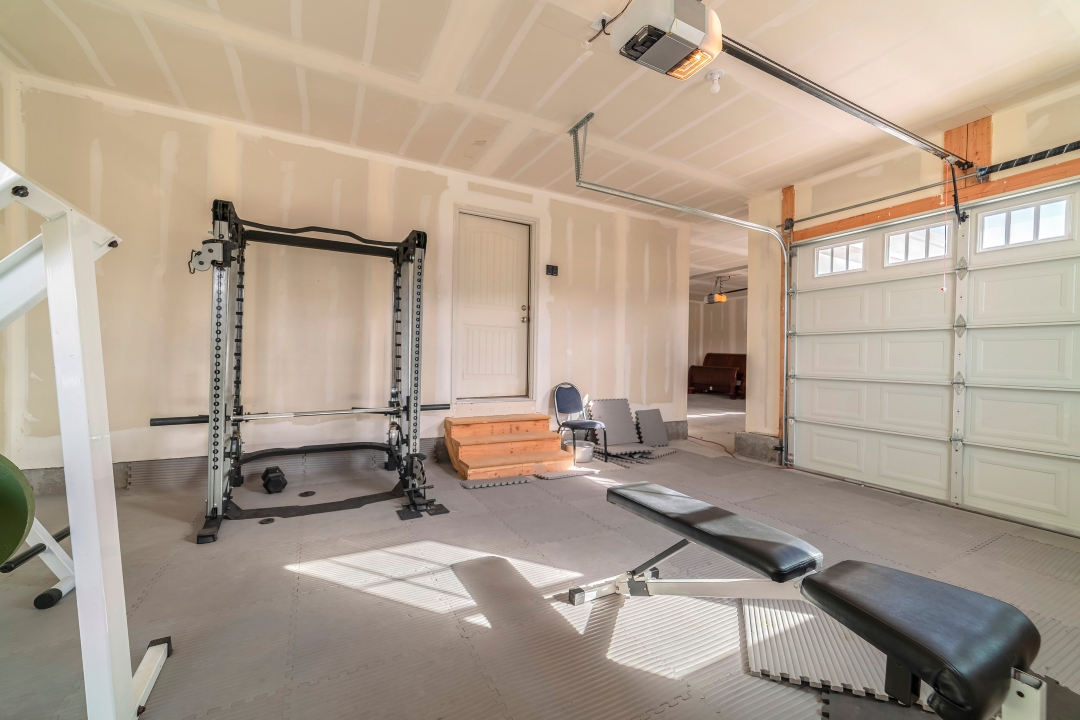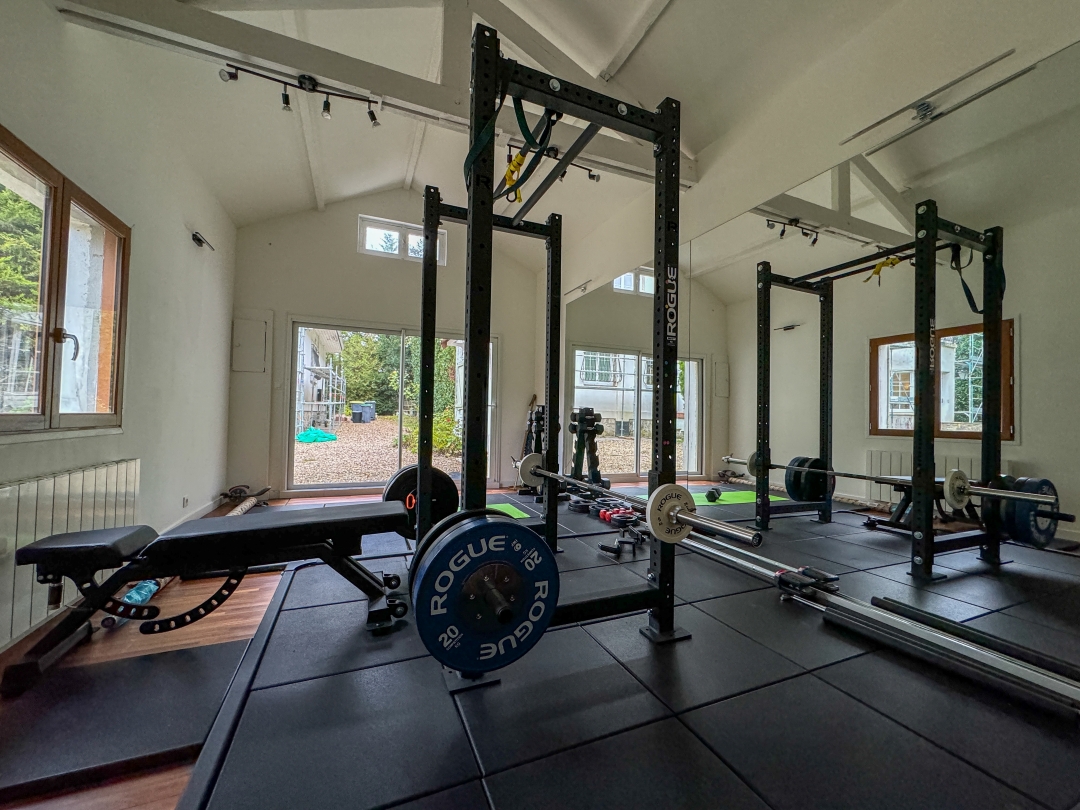CONVERTING A GARAGE INTO A HOME GYM
Imagine having a fully equipped home gym just a few steps from your living room. Converting your garage into a home gym is a practical and cost-effective way to enhance your fitness routine and may add value to your home.
This article will guide you through the process, from planning and regulations to gym equipment selection and setup.

PLANNING YOUR GARAGE CONVERSION
Check Local Planning Regulations
Permitted Development Rights cover most home garage conversions, and turning your garage into a gym would usually fall under this. The majority of garage-to-gym conversions do not require planning permission, especially if they have garage doors and the structure of the building remains unchanged.
There are some exceptions to take note of though, these are:
- If the garage is detached from the main building then you may need to apply for change of use.
- If the building is Listed or located in a Conservation area, then you should seek advice from your local planning authority before doing anything.
- If your garage is part of a ground-floor flat or maisonette, Permitted Development Rights may not apply.
- Some New Build homes have conditions requiring that the garage is kept as a garage for parking, and thus cannot be converted into anything.
As with any building work, it is advisable that you check in with your local planning department to make sure everything is above board and legal.

Consider the Types of Workouts You Will be Doing
Will you be doing yoga or weightlifting? Are you installing a cross-trainer or stationary bike?
If you are buying new gym equipment, take a note of the dimensions of the machines you are interested in – again, if they won’t fit the space you have available they won’t work for you. Bear in mind how much space you will need to have around the machines too, you want your home workouts to be as safe as possible. If you have any doubts about this, we recommend talking to the machine manufacturers as they may already have some safety guidance available for you: follow it to the letter. Your safety is very important!
If you are moving equipment you already own (and have perhaps lost the manual?) then look up the model online to get the dimensions or do it the old-fashioned way and measure it yourself.
Measure, Measure, Measure!
First, consider the space you have available – there’s no point in trying to shoehorn expensive gym equipment into a too-small space so, get your tape measure out and measure the dimensions of your garage. You will need this to make a layout of the room.

Plan the layout
Once you have measured up the space inside your garage and have the dimensions of any machines or equipment you want to install in there, you can plan the layout of the room.
You can use a pencil and piece of paper to do this, or there are many different online tools or Apps to help you plan a room layout – just find one you like, key in the room dimensions and let the software do the heavy lifting. But a pencil and paper works just as well if you have the time and inclination.
As said before, please follow all safety guidelines from the gym equipment manufacturers, and make sure there is enough space to use the equipment safely. This step could save you time and money, whilst also preventing accidents, so is a vital step in the process.
Understanding Building Regulations for Garage Conversions
Compliance with building regulations is crucial for a successful garage conversion.
Insulation and damp-proofing requirements
Walls, floors, and roof/ceiling all need to be insulated. If you buy a new garage door from us, you can rest assured that it will be fully insulated. We recommend a garage door with glazing, as this will allow natural light into the room while you do your workouts.
Insulation requirements for the Walls
Insulate the walls to achieve a U-value of 0.28W/m²K or lower. This generally requires adding a layer of insulation, such as 100mm of blockwork combined with 100mm of insulation material.
Insulation requirements for the Floor
Enhance the existing garage floor to provide sufficient damp protection and minimise heat loss. This can be achieved by using a liquid or sheet membrane connected to the damp-proof course in the wall. The floor should be insulated to attain a U-value of 0.25W/m²K or lower, typically requiring approximately 100mm of polyurethane foam insulation.
Insulation requirements for the Roof/Ceiling
For pitched roofs, install a total of 250-300mm of quilt-type insulation in two layers to achieve a U-value of 0.16W/m²K or lower. Ensure adequate ventilation at the eaves.
Fire safety measures and escape routes
Fire Resistance
Fit appropriate pedestrian doors and fire-rated partitions to ensure sufficient fire resistance. This includes making sure that any new separating walls between the remaining garage and the new room provide at least 30 minutes of fire separation.
Escape Routes
If the new room does not open onto a hallway that offers a direct protected route to an external door, you will need to install an escape window. This window must have a clear openable area of at least 0.33m², with both the width and height being no less than 450mm, and it should be no more than 1100mm from the finished floor level.
Ventilation and electrical safety standards
Ensure sufficient ventilation to prevent damp and condensation. Habitable rooms require background ventilation at a rate of 5000mm², while kitchens, bathrooms, and WCs need 8000mm². Depending on the room’s use, mechanical extract ventilation may also be necessary.
All electrical installations must comply with Part P of the Building Regulations. This means ensuring that all electrical work is performed by a qualified electrician and meets the required safety standards.
Budgeting & Costs
Before you get carried away, consider that budgeting is a key aspect of converting your garage into a home gym.
How much does a garage conversion cost? The average cost of a garage conversion is between £10K – £20K. This includes insulation, flooring installation, electrical work and the purchase of gym equipment.
You can keep costs down by buying used gym equipment.
A well-planned budget helps you manage expenses and avoid unexpected costs.
Choosing the Right Gym Equipment
The exciting part! Selecting the right equipment is essential for an effective home gym.
Essential home gym equipment
The following are what we would consider to be essentials:
- Dumbbells – essential for strength training, versatile and a mainstay of any home gym equipment list.
- Barbells – For heavy lifting and compound movements like squats, deadlifts and bench presses.
- Weight Bench – A sturdy weight bench is essential for bench presses, step-ups and seated movements.
- Cardio Machines – consider your preference here and pick the right cardio machine for your needs, such as a treadmill, exercise bike, rowing machine or cross trainer. If you have the space, you may want more than one cardio machine.

Space-Saving Options and Multi-Functional Equipment
If space is a consideration, then do consider these options for your home gym.
- Adjustable dumbbells – save space by combining multiple weights into one set
- Foldable weight bench – when not in use, it can be folded up and stored.
- Multi-gyms – These all-in-one machines offer various exercise options in a compact design, perfect for small spaces.
- Resistance Bands – Lightweight and versatile, resistance bands can be used for strength training and stretching exercises.
Where to buy gym equipment
You can buy new gym equipment online or at local shops. For larger, and more expensive equipment, we recommend you choosing to purchase from somewhere you can try before you buy, where you will be guided through the various options by an expert. This will help ensure that the equipment you buy suits your needs.
To save money, you could buy second hand, but make sure you try before you buy. Check out classified ads, online marketplaces and local buy-and-sell groups for pre-owned equipment at a lower cost.
The right equipment ensures you can perform a variety of workouts and make the most of your space. By choosing versatile and space-saving options, you can create a functional and efficient home gym that meets your fitness needs without overcrowding your space.
Setting up your Home Gym
Setting up your home gym involves more than just placing equipment.
Flooring Options
Your concrete garage floor will need a covering. We recommend rubber mats, foam tiles or LVT flooring. This will give you a softer surface to workout on and ensure your joints don’t get damaged by impact with a hard floor. Keeping fit is about being healthy, not injuring yourself!
Lighting & Ventilation
We recommend a custom garage door for your new home gym. Remember, planning permission may need to be sought if the garage has ‘normal’ doors, so a garage door is essential. Garage doors with windows will allow natural light to enter the room, and are ideal for garage conversion projects like this.
You will also want to make sure your garage conversion home gym has sufficient lighting at all times of the day or night.
Ambient lighting
AKA ‘the big light’ – this should provide a good level of visibility, without being too bright. Consider a dimmer switch if you are going to be using the room for yoga or relaxation.
Decorating the space
You will want to create an inviting and motivating space in your new home gym, and decorating is often the most fun and engaging part of any room redecoration process.
Organisation
An organised space is much easier to keep clean and tidy. The trick is having enough storage space for all the equipment and tools you require. We recommend storage solutions such as shelving, racks and hooks for equipment. Try to give everything a ‘home’ so you always know where to put it back when you’re finished with it and any others that may be using the space know this too.
Designate space for particular activities – for example you may pick a corner to install your cardio machines, create a space for weightlifting and another for floor activities such as yoga.
Decoration
Mirrors are important in gyms – they not only assist in your workout routines but can also help make a room feel larger and more inviting.
You could decorate the walls with motivational posters and images that inspire you. If your fitness goal is to get you back into shape for a particular hobby or activity, you may find inspiration and motivation by putting up pictures of yourself doing those activities.
Music
Music is important for workouts. You may need a beat to follow for repetitive movements or just something to keep you focused and in ‘the zone’. Install a sound system or Bluetooth speakers to enable you to listen while you workout.
A well-organised and aesthetically pleasing garage-to-gym conversion will enhance your workout experience, potentially add value to your home and motivate you towards a healthier lifestyle.
With careful planning, adherence to regulations, and smart equipment choices, you can create a functional and enjoyable workout space in your garage.
Start your garage conversion today and enjoy the convenience of a home gym tailored to your needs. The team here at Bulldog would be delighted to help you achieve your dream of creating your own personal home gym. Get in touch to speak to our team and get the ball rolling.



